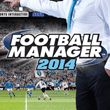Individual training | Training

After selecting a general training for the whole team, it's time to set individual training for each player. You can divide it into 3 aspects: position, selected attribute/role and preferred moves. You can set intensity for any individual player, pay attention to it to make everyone happy with their training. Moreover, by selecting training of a preferred move or a new position, you'll make the training distribute evenly. Set as high intensity as possible while keeping the players content for the biggest increase in attributes.
Individual training (roles/attributes)
Individual training lets you select an attribute on which your player has to focus. Thanks to this option, you don't have to increase defensive training for all team just to improve single player's marking. Role training depends on the player's position and teaches him attributes needed for a specific role (all of them described in Tactics chapter). Obviously, not every attribute can be trained.
Goalkeepers: first touch, free kicks, handling, kicking, penalties, throwing, composure, leadership, positioning, agility, balance, jumping reach, quickness, stamina, strength.
Field players: corners, crossing, dribbling, finishing, first touch, free kicks, heading, long shots, long throws, marking, passing, penalties, tackling, technique, composure, leadership, off the ball, positioning, agility, balance, jumping reach, quickness, stamina, strength.
Positioning, off the ball and marking are available for teams with at least good training base.
Position training
Position training has to teach a player to play on a new position. It's useful when you don't have many players, it's expected from a player to be able to play on more than one position. Check player's best positions on his profile.
You can describe player's abilities on a specific position as:
Natural | Natural position for a player, he'll be best at it. |
Talented | Not a natural position but the player will still be very good at it. |
Competent | The player may be successful on this position, however you shouldn't expect incredible results. |
Doubtful | The player will meet the expectations only for a short time. |
Inept | The player will play poorly while getting used to unnatural position most of the time. |
Talentless | The player shouldn't be on this position at all, only if you don't have anyone better. |
Remember to select a proper position training for the player's attributes. You shouldn't try to turn a natural attacker into a central defender. Consider player's age - it's much easier to teach a new position to a young beginner.
Preferred moves
In the player's tab you can see his preferred moves, you can teach him new ones or delete the unwanted ones through interaction with coaches. Do it by selecting New preferred move in the individual training menu. For goalkeepers, the selection of moves is limited - they can perform free kicks and avoid/practice playing with their weaker leg. Remember that you can't change every player's moves, sometimes attempts in doing so will result in failure.
List of recommended moves for each position.
1. Central defenders
-tight marking,
-avoiding or choosing to throw himself into tackles,
-passing to teammates on better positions,
-playing straight passes,
-playing in attack more often,
-avoiding/practicing playing with their weaker leg.
2. Side defenders
-tight marking,
-avoiding or choosing to throw himself into tackles,
-passing to teammates on better positions,
-playing in attack more often,
-sticking to touchline,
-running forward with the ball,
-throw ins into penalty area,
-avoiding/improving playing with weaker leg.
3. Defensive midfielders
-tight marking,
-avoiding or choosing to throw himself into tackles,
-playing in attack more often,
-passing to teammates on better positions,
-slowing the tempo,
-avoiding/improving playing with weaker leg.
4. Central midfielders
-playing in attack more often,
-passing to teammates on better positions,
-slowing the tempo,
-long free kicks,
-more long passes,
-forced free kicks,
-long shots as often as possible,
-avoiding/improving playing with weaker leg.
5. Wingers
-playing in attack more often,
-passing to teammates on better positions,
-running forward with the ball,
-attacking wide more often,
-sticking to the touchlines,
-passing the ball to the other side,
-more long passes.
6. Attackers
-long shots as often as possible,
-stronger shooting,
-shooting near the ground more often,
-going around goalkeepers,
-trying to soot on first touch,
-Shooting from overhead kicks as often as possible,
-going around enemies by playing into a free area,
-going into the centre of the penalty area,
-improving playing with the weaker leg.
You are not permitted to copy any image, text or info from this page. This site is not associated with and/or endorsed by the SEGA or Sports Interactive. All logos and images are copyrighted by their respective owners.
Copyright © 2000 - 2025 Webedia Polska SA for gamepressure.com, unofficial game guides, walkthroughs, secrets, game tips, maps & strategies for top games.
